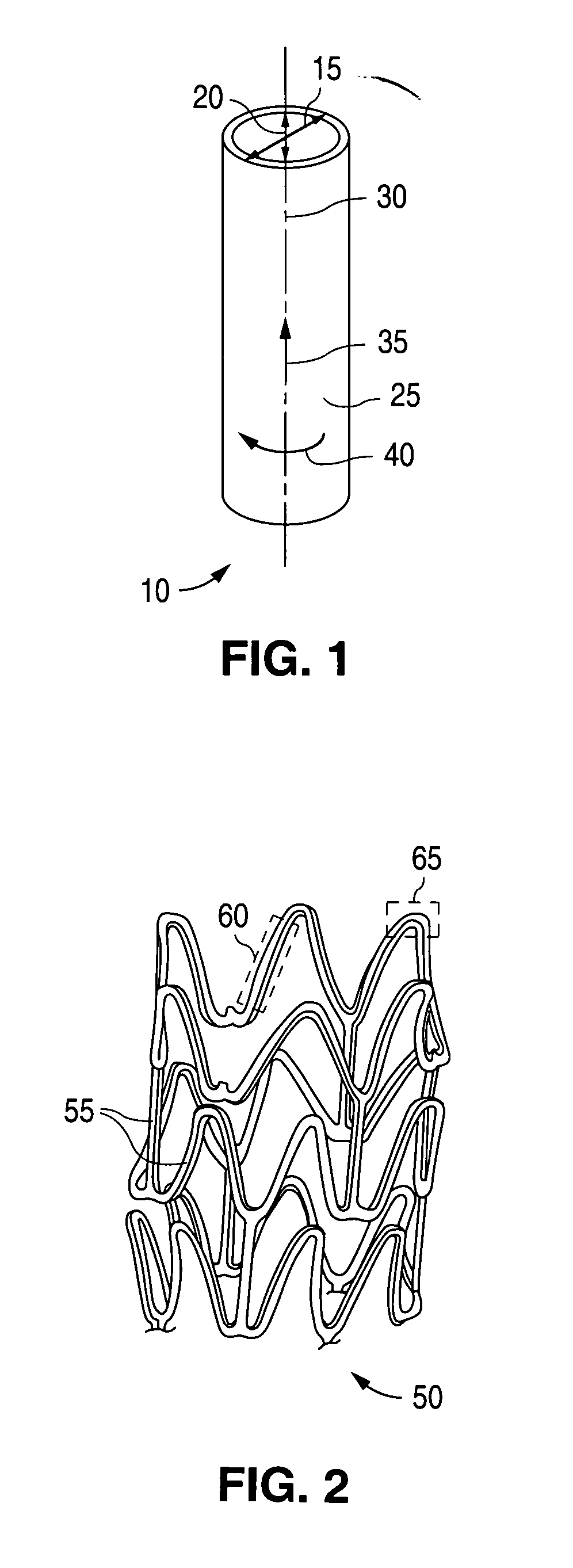Controlled deformation of a polymer tube with a restraining surface in fabricating a medical article
a polymer tube and restraining surface technology, applied in the field of controlled deformation of polymer tubes, can solve the problems of reducing the radial rigidity of the strut, reducing the circumferential strength of the stent, and reducing the radial rigidity of the stent, so as to achieve the effect of increasing the pressur
- Summary
- Abstract
- Description
- Claims
- Application Information
AI Technical Summary
Benefits of technology
Problems solved by technology
Method used
Image
Examples
example
Optical Micrographs of Stents
[0159]As indicated above, a polymeric stent with induced polymer chain alignment may be more resistant to cracking during use, including crimping, delivery, and deployment. FIGS. 17 and 18 depict optical micrographs of crimped stents made from a biodegradable polymer (100% poly(lactic acid) polymer). The stent shown in FIG. 18 was fabricated from a tube radially deformed with a compressible fluid as depicted in FIGS. 5A-B. FIG. 17 illustrates cracks 850 in a stent with no induced radial deformation. No cracks are observed in the stent depicted in FIG. 18.
PUM
| Property | Measurement | Unit |
|---|---|---|
| Temperature | aaaaa | aaaaa |
| Pressure | aaaaa | aaaaa |
| Diameter | aaaaa | aaaaa |
Abstract
Description
Claims
Application Information
 Login to View More
Login to View More - R&D
- Intellectual Property
- Life Sciences
- Materials
- Tech Scout
- Unparalleled Data Quality
- Higher Quality Content
- 60% Fewer Hallucinations
Browse by: Latest US Patents, China's latest patents, Technical Efficacy Thesaurus, Application Domain, Technology Topic, Popular Technical Reports.
© 2025 PatSnap. All rights reserved.Legal|Privacy policy|Modern Slavery Act Transparency Statement|Sitemap|About US| Contact US: help@patsnap.com



